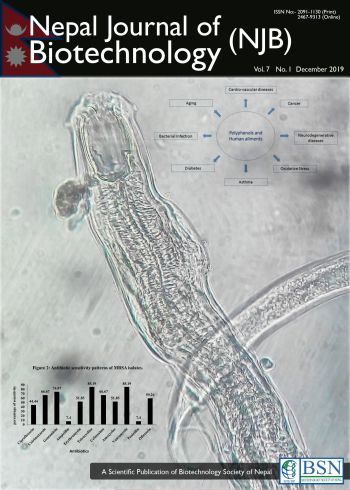Potential of Ayurvedic Drugs in Differentiating Neuronal Stem Cells from Human Breast Milk: A Review
DOI:
https://doi.org/10.3126/njb.v7i1.26956Keywords:
Human breast milk, Stem cell, mammary gland, nervous system, nestin-positive, non-invasiveAbstract
Recently, Stem cell therapy has revolutionized excellent clinical therapy with the potential of stem cells to differentiate into various cell types and it may help to replace different cell lines of an organism. Frequent, clinical trials are carried out to merge the new scientific stem cell information and techniques with traditional knowledge and plant extracts that may result in less toxic, affordable, and highly available natural alternative therapeutics. Ayurveda, the traditional Indian system of medicine has given great emphasis to the promotion of health. Ayurveda therapies are based on the restoration of body balance and nourishment of dhatus. Rasayana concept of Ayurveda explains tissue regeneration and cell renewal. Rasayana drugs and therapies provide research opportunities for the biology of regeneration. Specific Medhya Rasayana stimulates and nourishes respective Medha (Dhi, Driti, and Smriti) dhatus. Interpretation of this description offers clues for specific differentiation of neuronal stem cells from human breast milk (HBM) in the presence of some herbal extracts. The previous studies suggest that neuronal stem cells differentiate from Human Breast Milk (Human mesenchymal stem cell) more effectively with Madhya Rasayana drugs.
The present review highlights the potential of Ayurveda and its possible contributions in regenerative medicine.
Downloads
Downloads
Published
How to Cite
Issue
Section
License
Copyright Notice:
The manuscript submitted to NJB must be an original contribution, not previously published and should not be under consideration for publication elsewhere. When the manuscript is accepted for publication, the authors agree to automatically transfer the copyright of the article to the publisher. It should grant permission to any third party, in advance and in perpetuity, the right to use, reproduce or disseminate your article, according to the NJB copyright and license agreement.
Authors transfer copyright to the publisher as part of a journal publishing agreement but have the rights to: Share their article for Personal Use, Internal Institutional Use and Scholarly Sharing purposes, with the NJB applies the Creative Commons Attribution-NonCommercial CC BY-NC license to all the works we publish after Jun 2020 (Before it was CC BY-NC-ND). Under this license, authors agree to make articles legally available for reuse, without permission or fees, for virtually any non-commercial purpose. Anyone may remix, adapt, and build upon your work non-commercially, and although their new works must also acknowledge you and be non-commercial, they don’t have to license their derivative works on the same terms. More details on CC BY-NC refer to its Licence Deed and Legal Code.






